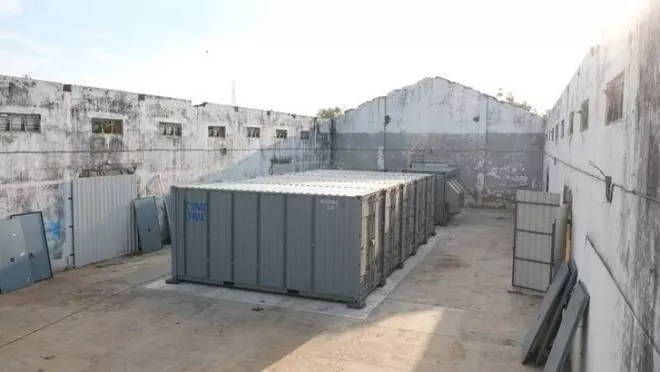Nearly 12,000 unexplored age-old palm-leaf manuscripts that contain historic facts stored in Puducherry are getting a new lease of life. To research these invaluable manuscripts, a mobile Container Lab from Germany landed at Katupalli port at Ennore by container ship Prague Express and reached Puducherry last month.
The Container Lab consists of seven containers - five contain lab rooms, another contains power generators and water supplies and a seventh serves as storage.
For historians, the manuscripts are among the most important sources on religion, history, astrology, and medicine from a written culture that is around two thousand years old and belongs to one of the world’s most significant literary traditions.
The project at Puducherry is part of a programme called Cluster of Excellence ‘Understanding Written Artefacts’ (UWA), which is part of the Centre for the Study of Manuscript Cultures (CSMC). This is a research centre within the Universität Hamburg at the Faculty of the Humanities and the Faculty of Mathematics, Informatics and Natural Sciences.
The project brings together researchers from over 40 academic disciplines to develop a global framework for the study of all written artefacts from the beginning of writing to the present day and from all regions that have produced such artefacts, according to project details.

The mobile Container Lab at Puducherry
Palm-Leaf Manuscript Profiling Initiative (PLMPI) UWA and CSMC have established the project Palm-Leaf Manuscript Profiling Initiative (PLMPI) analysis for both fresh palm-leaves and palm-leaf used in manuscripts. This is to investigate the material properties of those written artefacts and thus better appreciate their historical and cultural value.
The PLMPI Mission at Puducherry will include investigating the history of palm-leaf manuscripts from historical Tamil Nadu and South India; gaining insight into the craftsmanship of the production of palm-leaves for writing; testing the applicability of a number of analytic techniques to the study of palm-leaf manuscripts and demonstrating the functionality of CSMC’s novel Container Lab for overseas deployment.
‘We assemble the required equipment individually for every mission’, says Markus Fischer, food chemist and head of the Container Lab project. For example, it is equipped with a clean room for molecular biology work to determine the palm species whose leaves were used as writing support. The unknown scribes often wrote with a colour made from soot. Identical soot particles or recurring DNA structures in palm leaves could prove a common origin of different manuscripts, said Fisher.
Two large private collections of palm-leaf manuscripts that transmit principally Sanskrit, Tamil, and Manipravalam texts are preserved in French research institutions in Pondicherry. The first major collection is that of the French Institute of Pondicherry (IFP), which comprises 8,187 palm-leaf bundles collected from every area of the Tamil speaking South of India and contains texts of every branch of pre-colonial Indian learning.
Nearly half of the material is related to Saivism, the worship of the God Siva. It is in fact the largest collection in the world of manuscripts of texts of the Saiva Siddhanta, a religious tradition that in the 10th century CE was spread across the Indian subcontinent and beyond, as far as Cambodia in the East, and still represents the major form of Saivism practised in Tamil Nadu.
The second collection is housed in the Pondicherry Centre of the École française d’Extrême-Orient (EFEO), a French research institution under the aegis of the French Ministry of Higher Education, Research and Innovation. This is a collection of 1,662 palm-leaf manuscripts, mostly related to Vaishnavism, donated by their owner from the Tirunelveli District in Tamil Nadu.





Comments
Comments have to be in English, and in full sentences. They cannot be abusive or personal. Please abide by our community guidelines for posting your comments.
We have migrated to a new commenting platform. If you are already a registered user of TheHindu Businessline and logged in, you may continue to engage with our articles. If you do not have an account please register and login to post comments. Users can access their older comments by logging into their accounts on Vuukle.